Archive
2021
KubaParis
Bucolic Gang
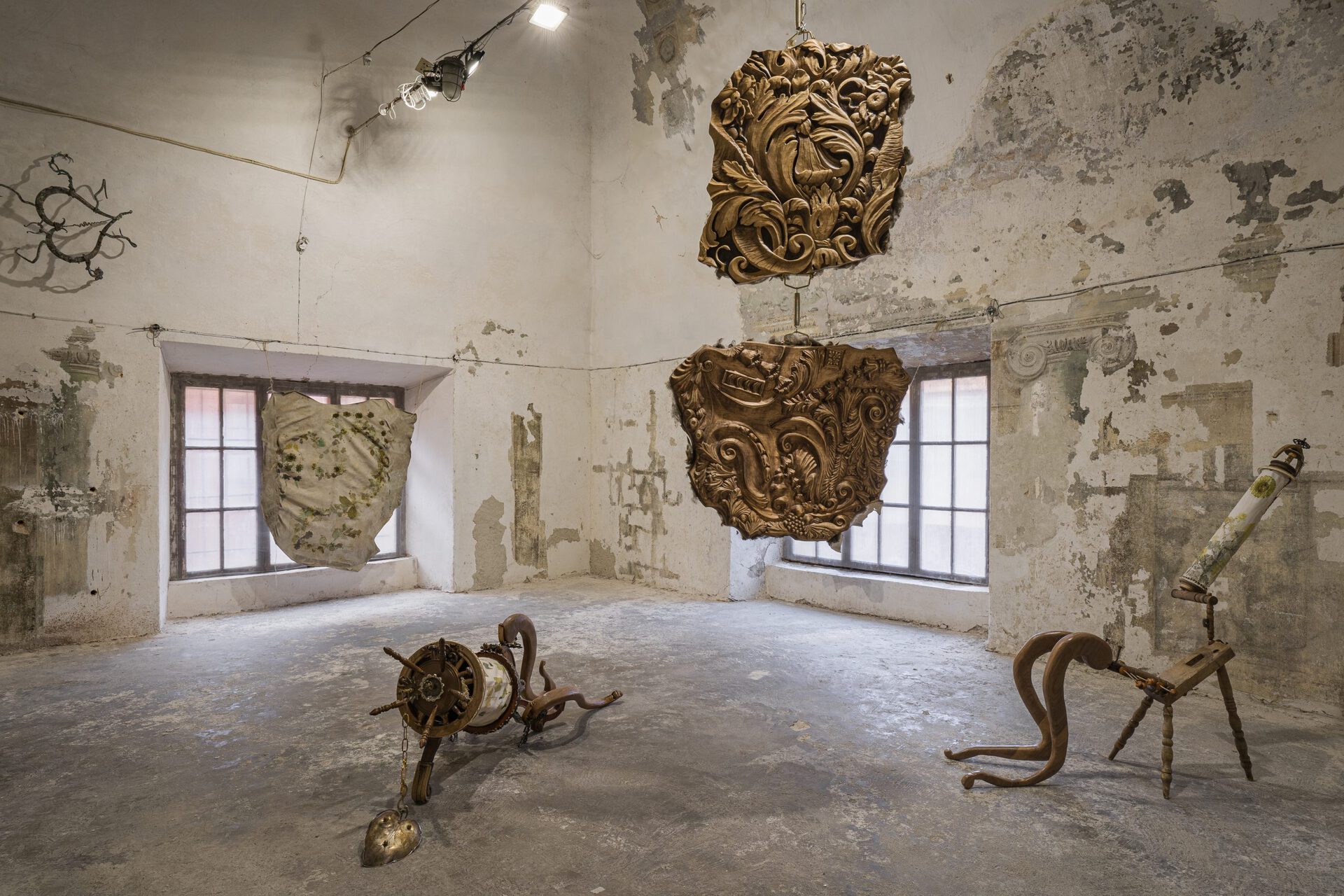

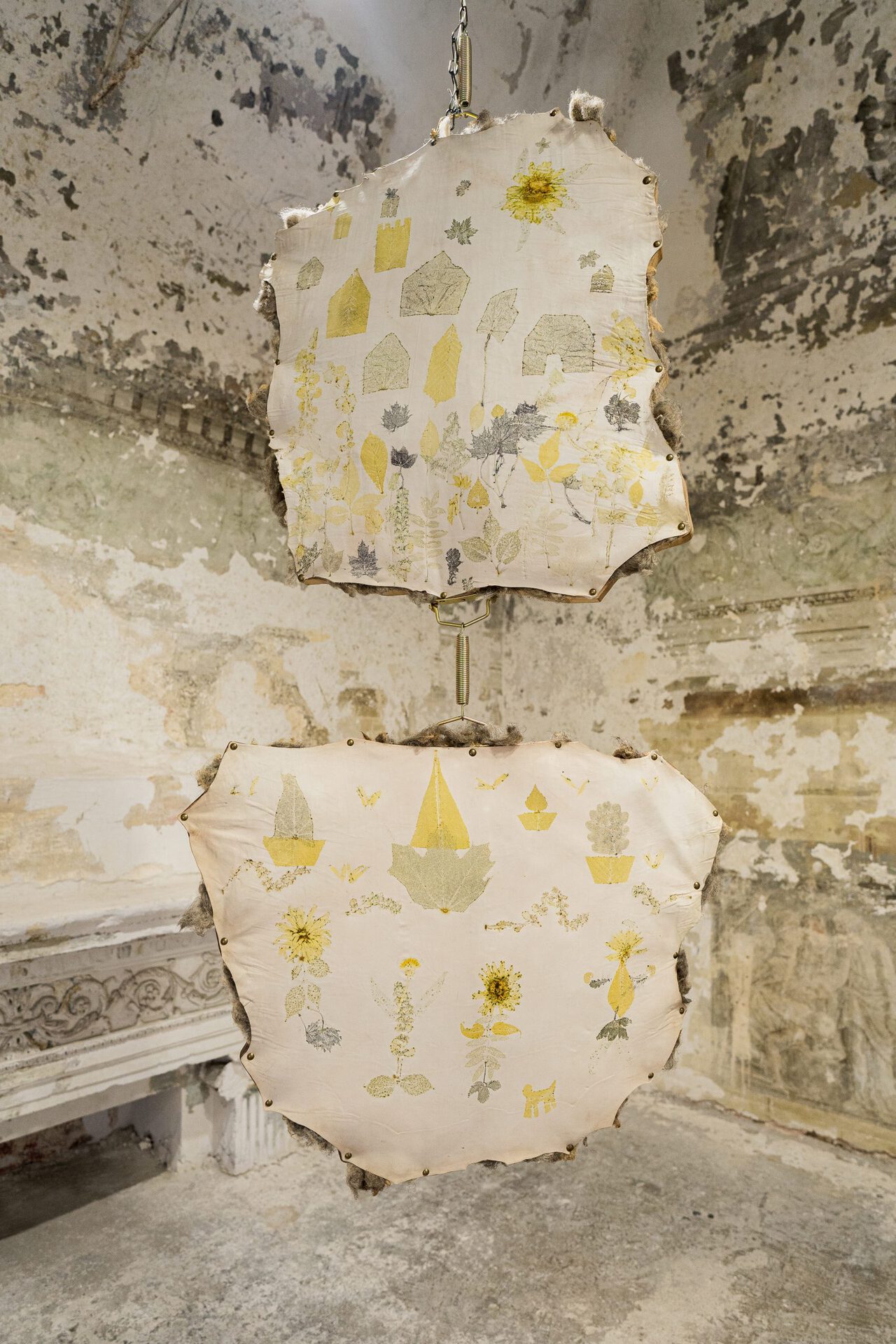
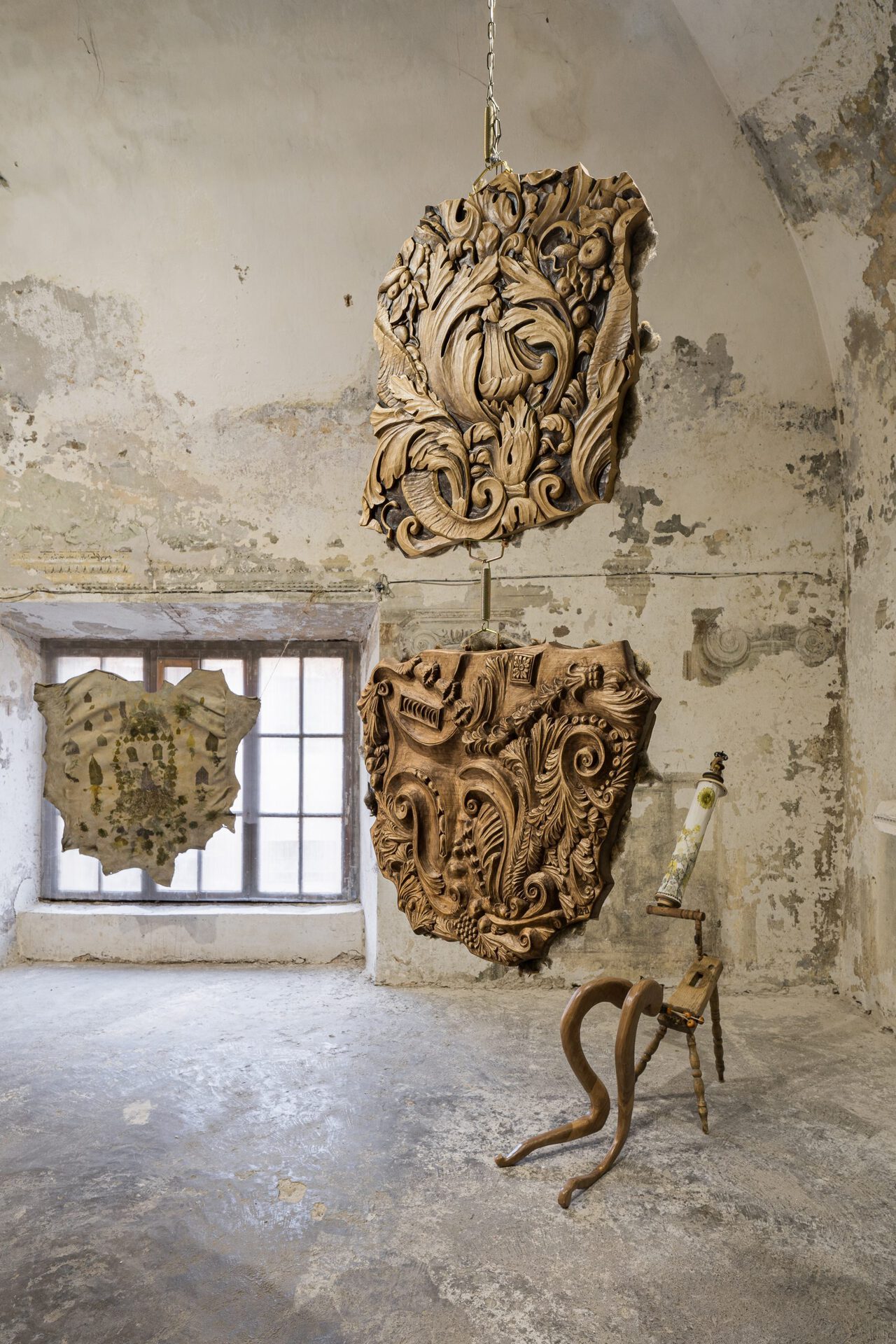
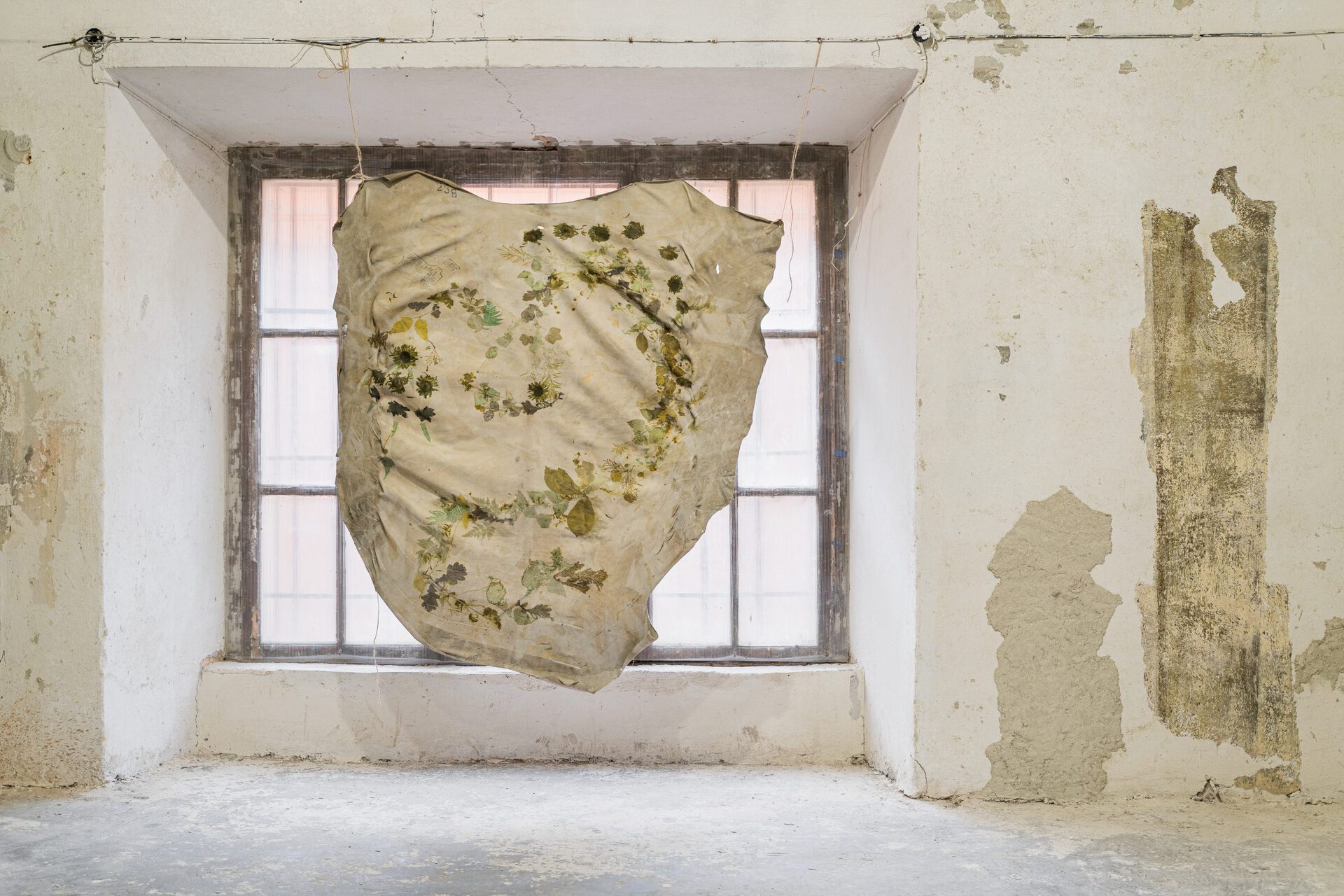
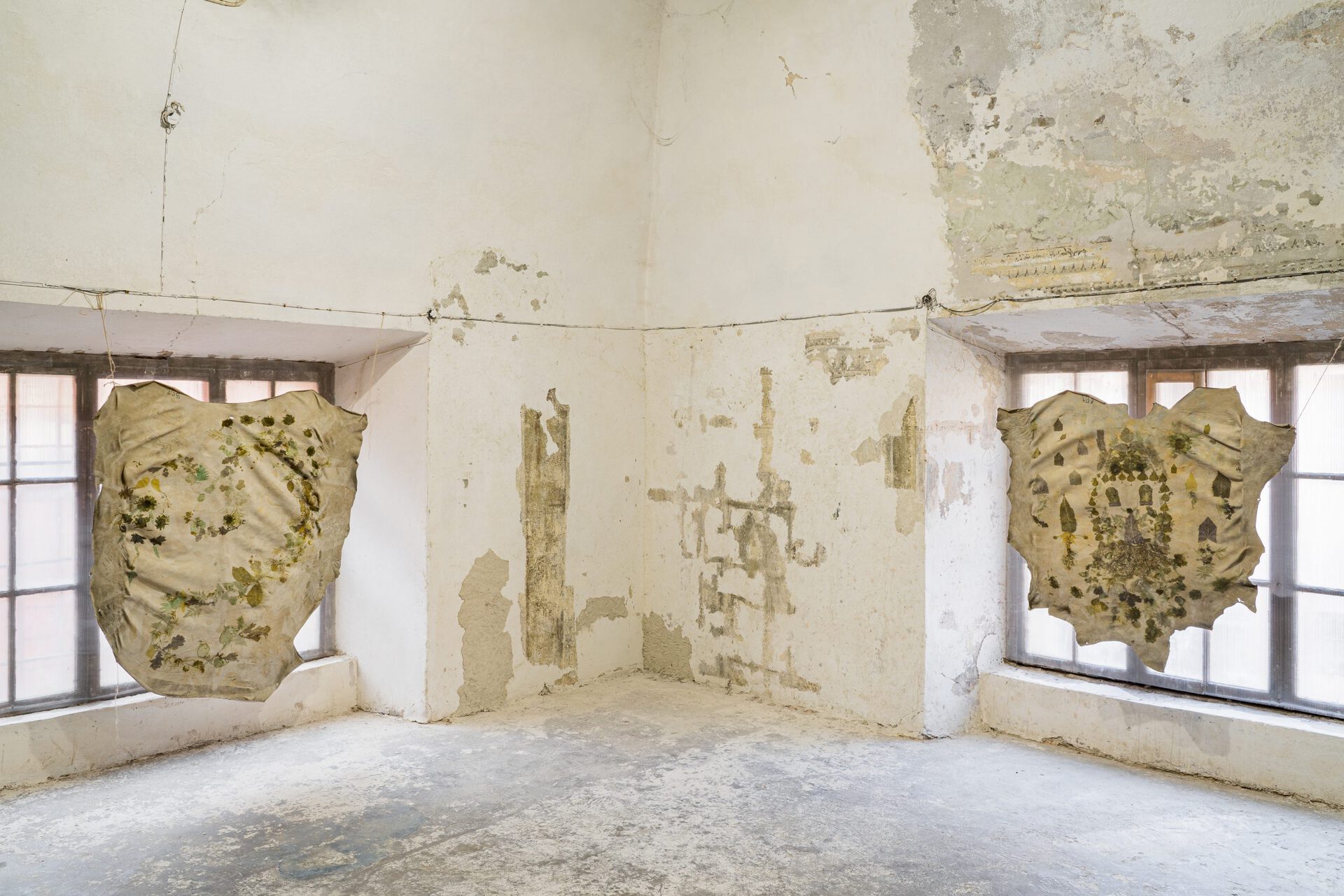


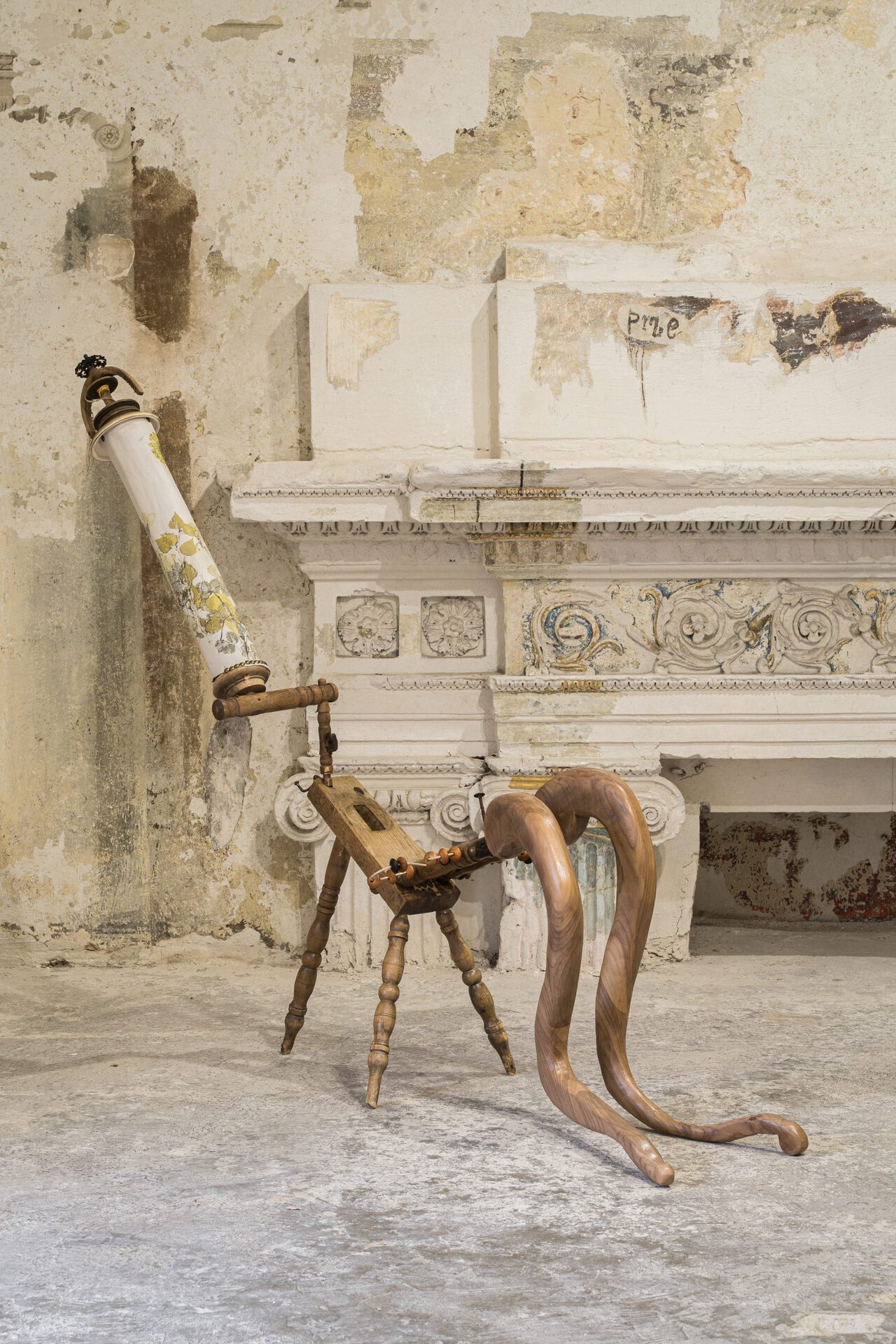
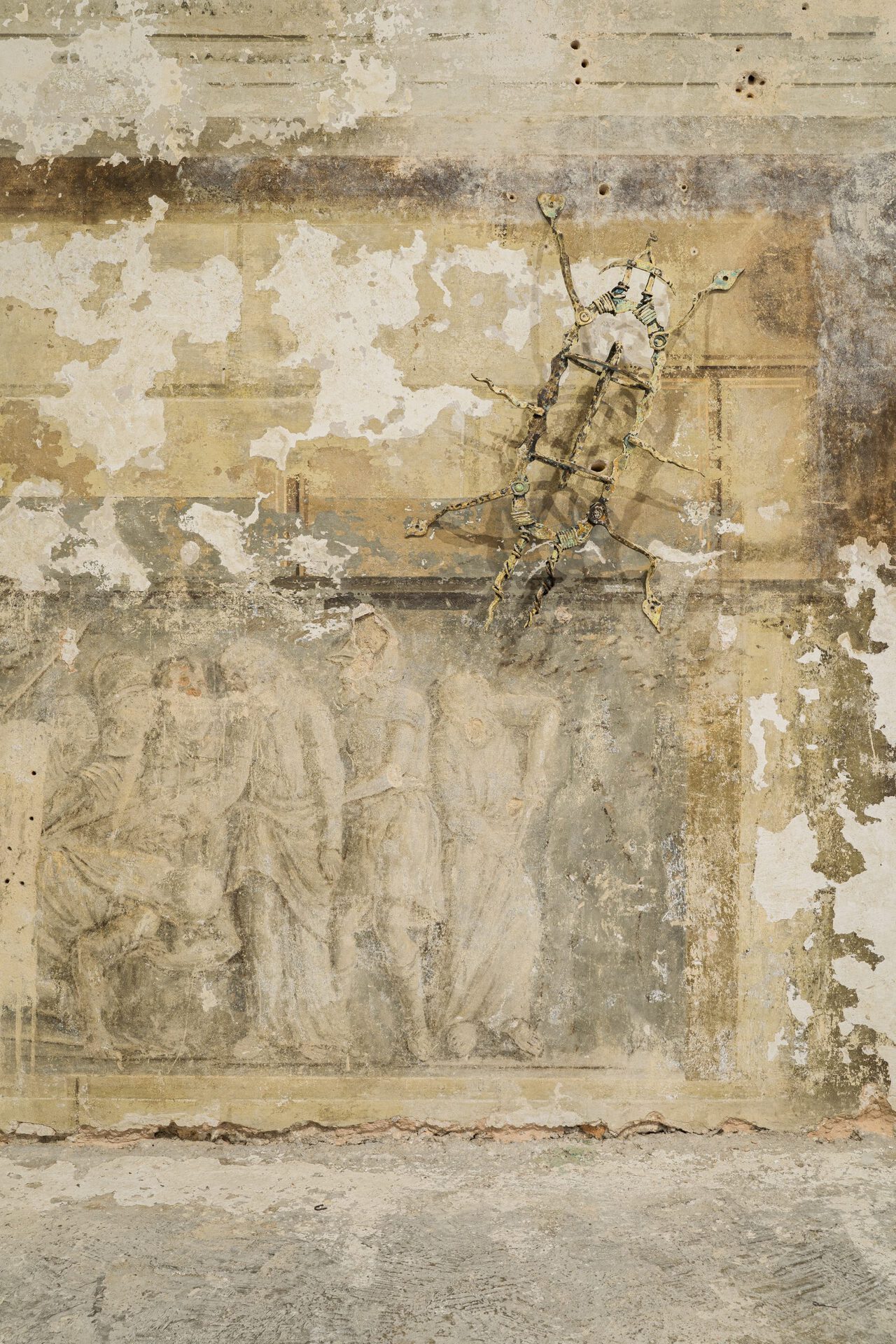
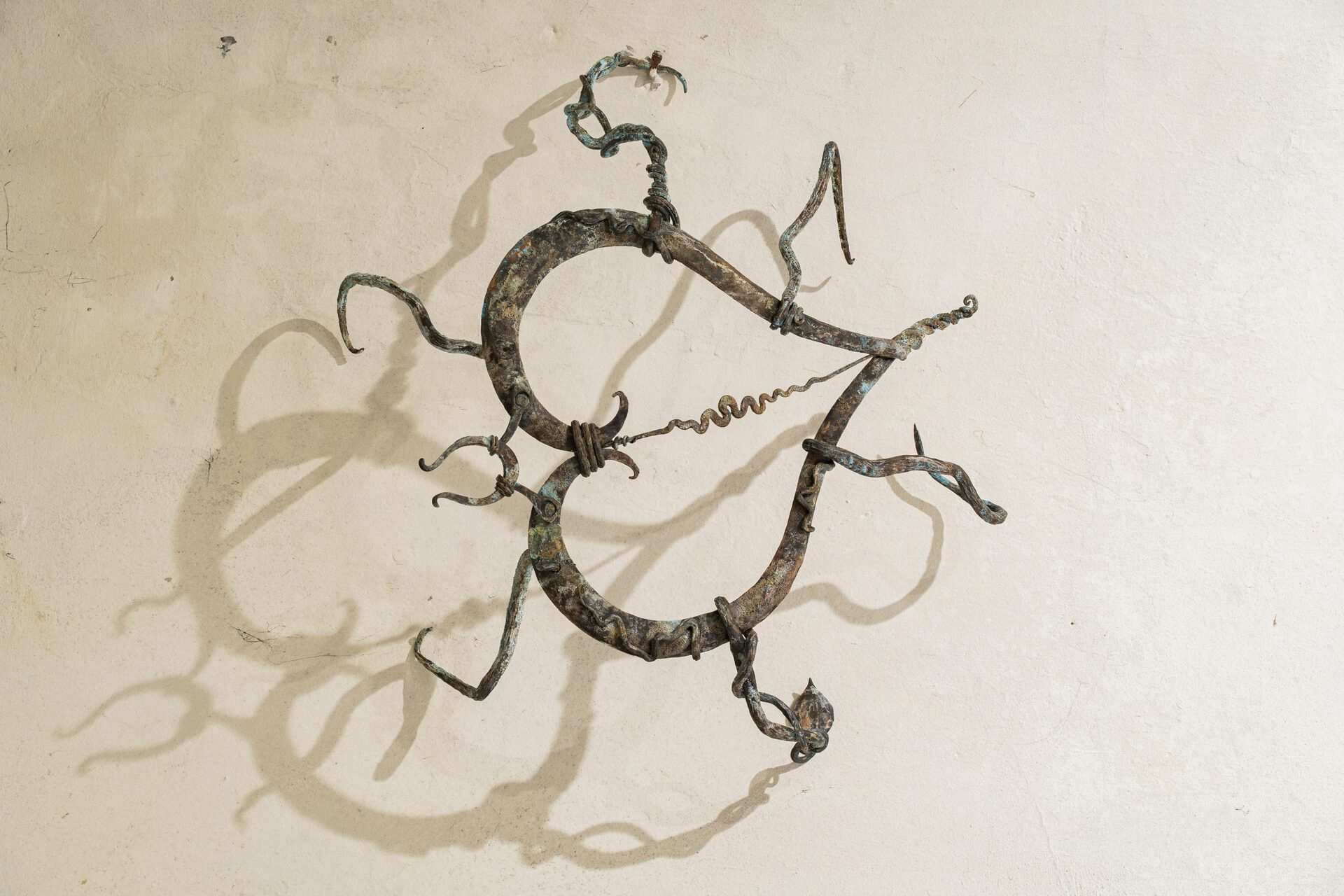
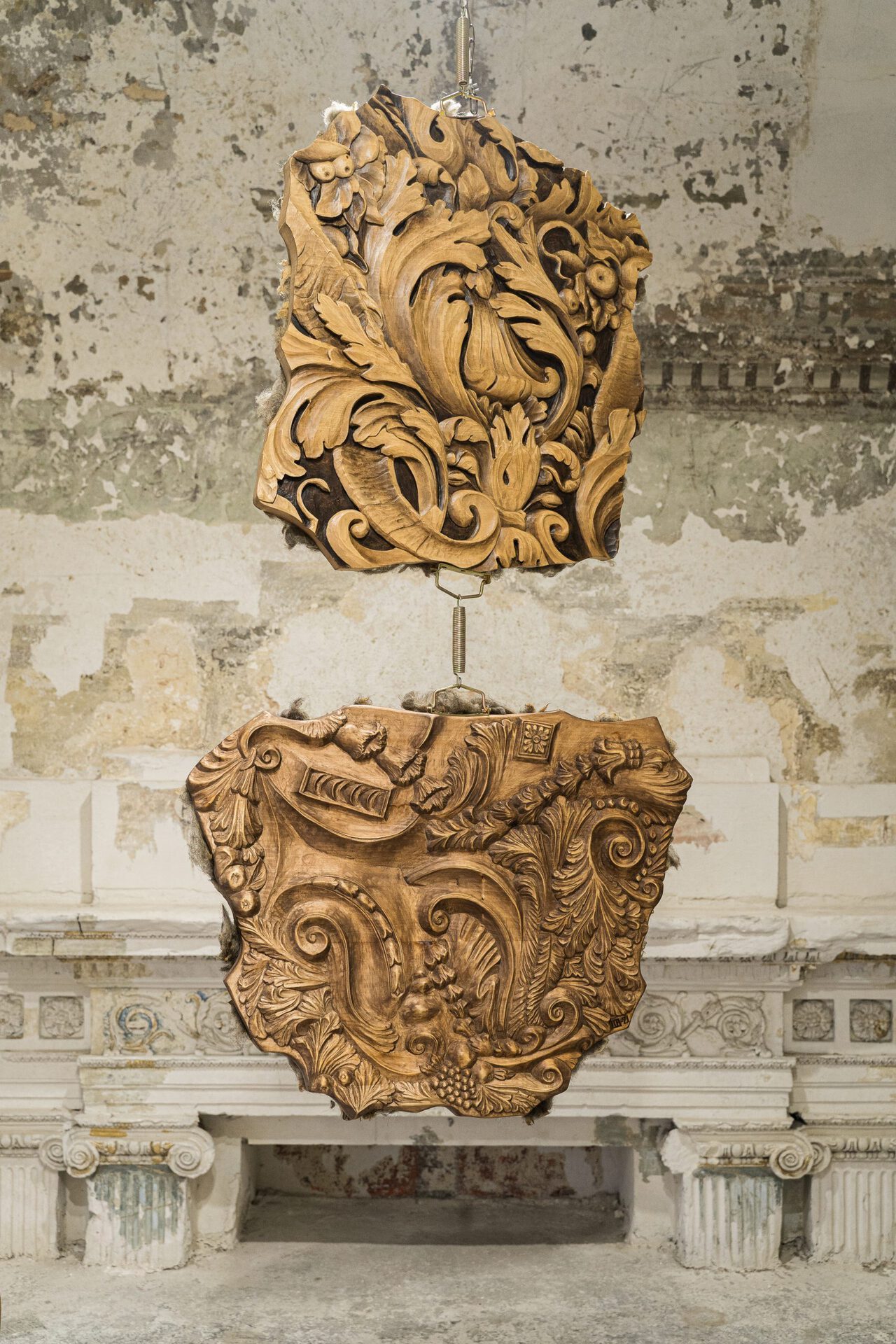
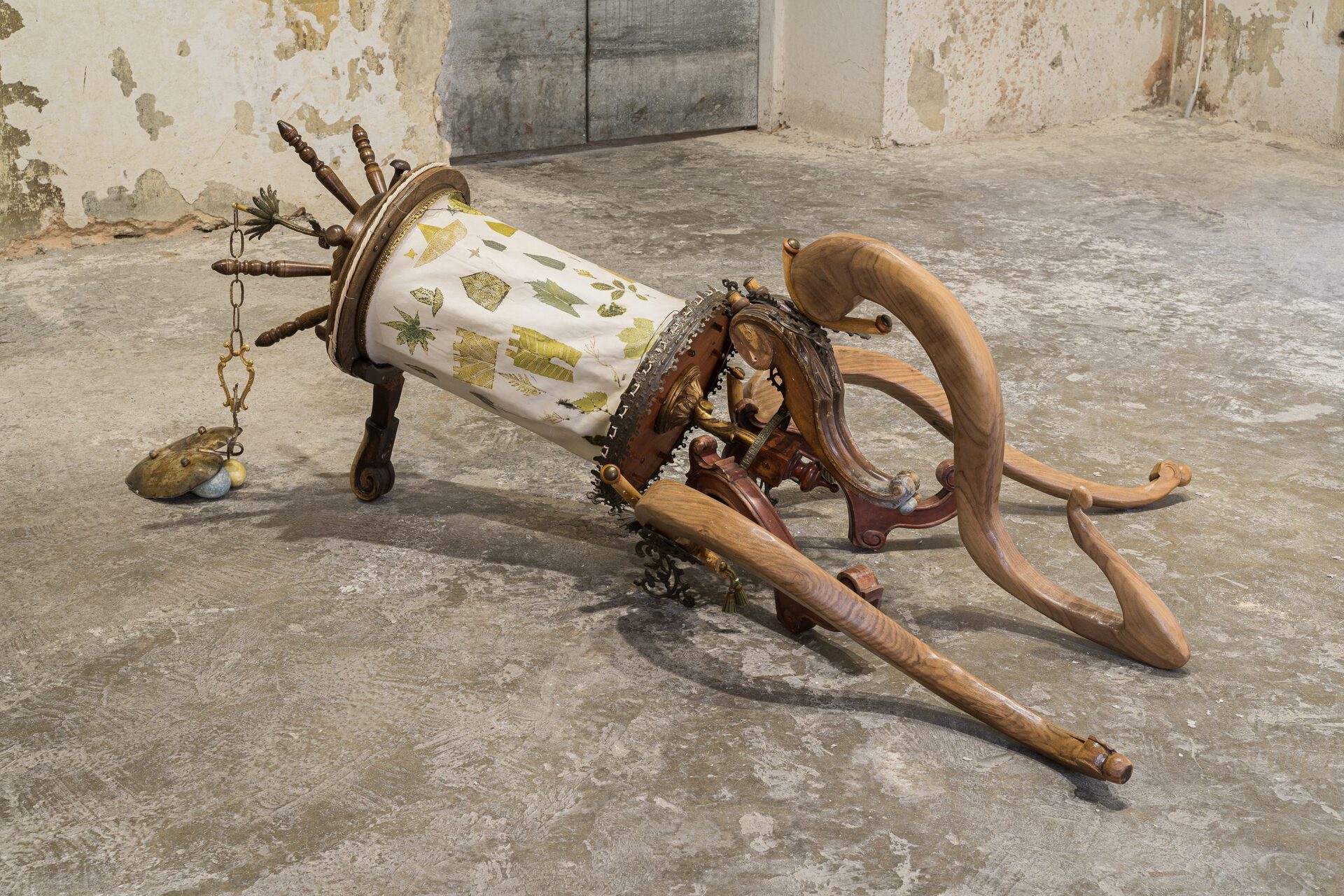
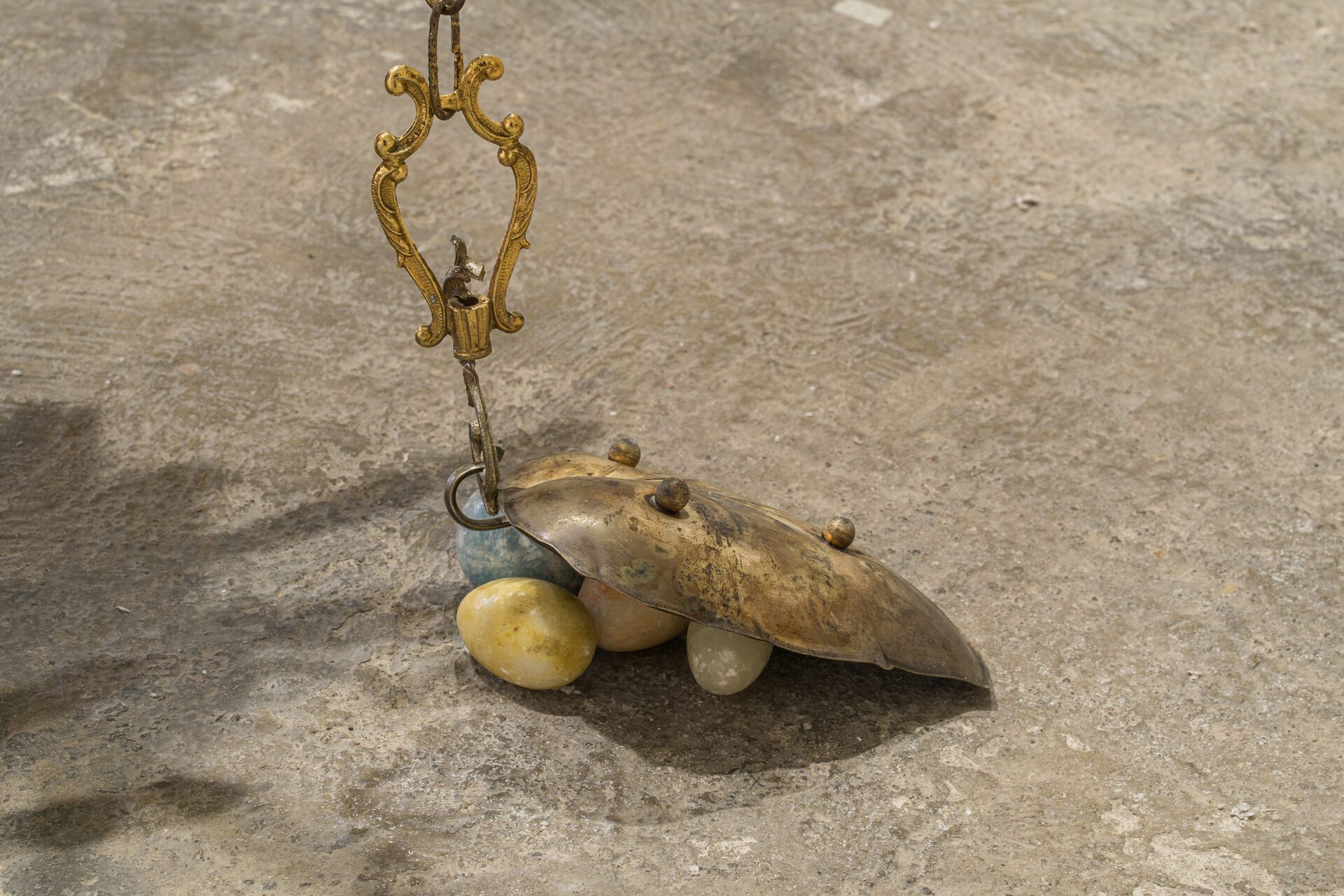
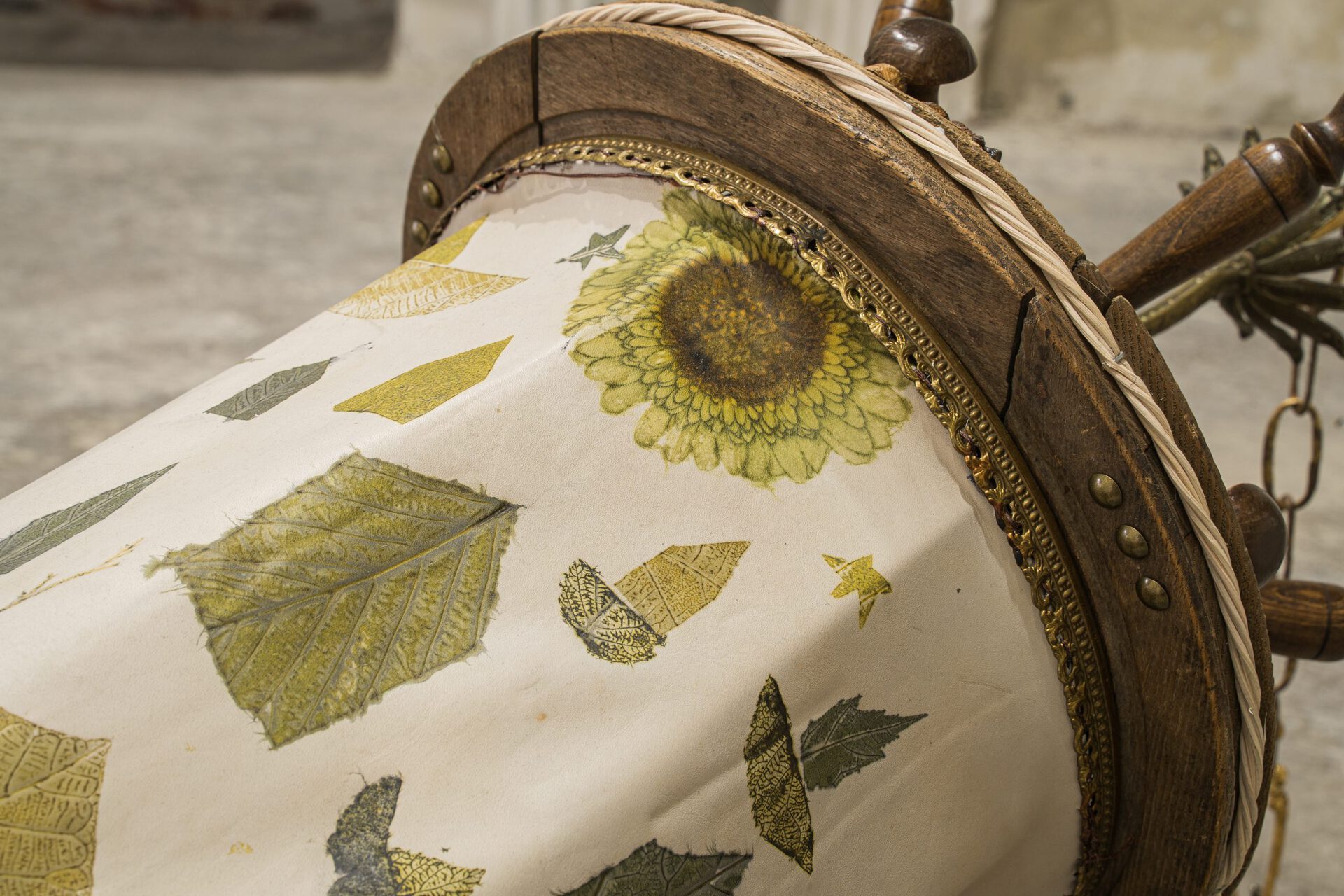
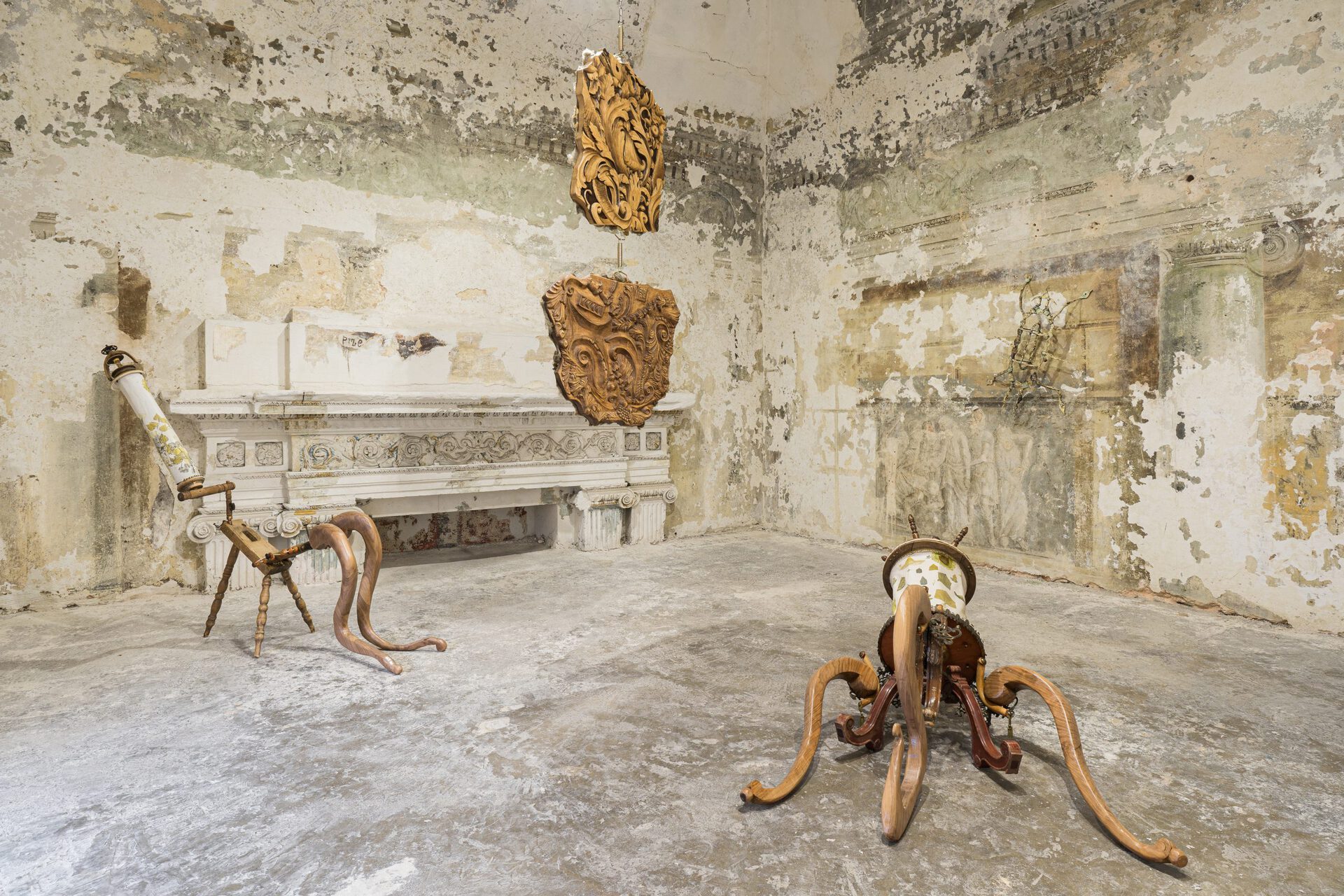
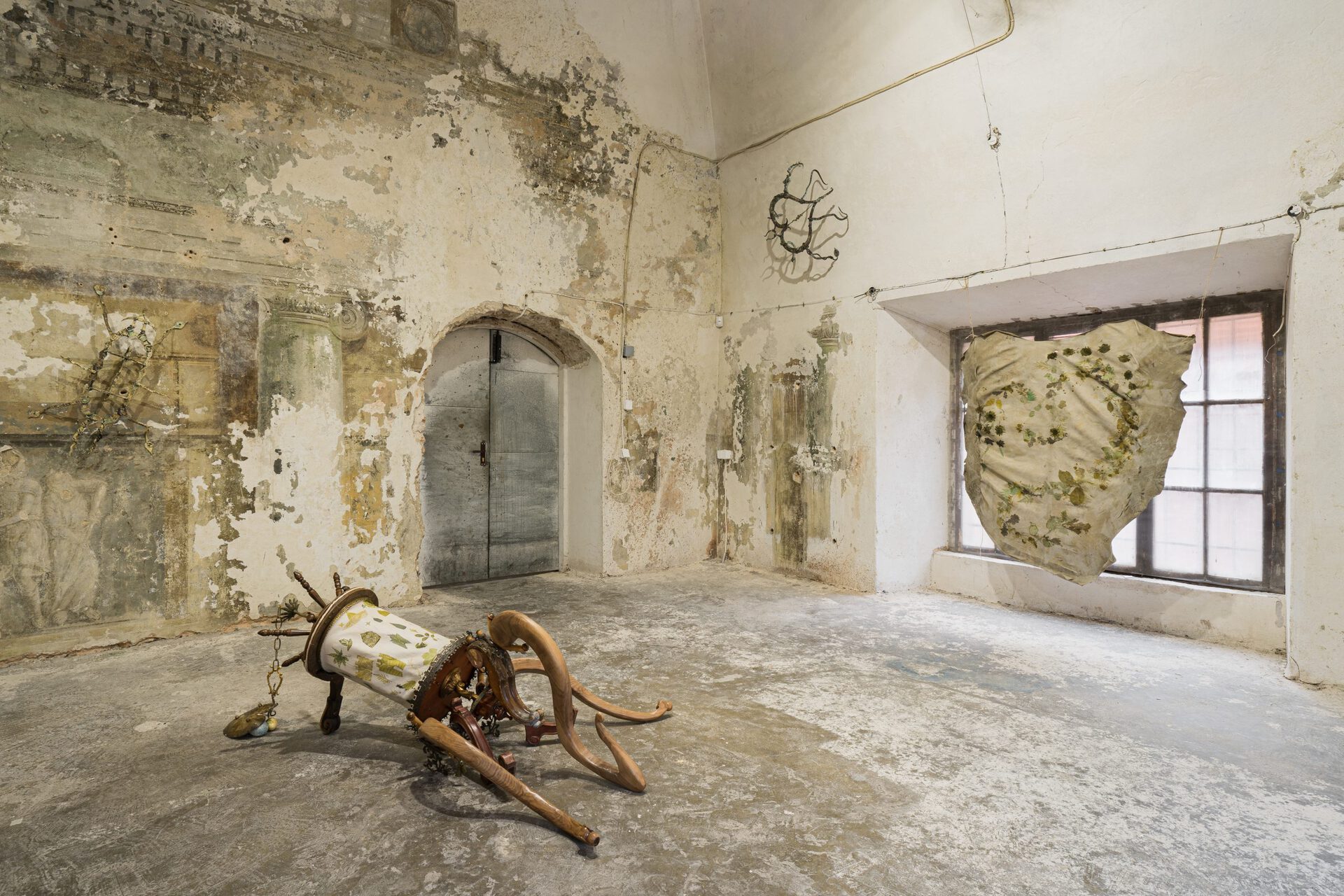

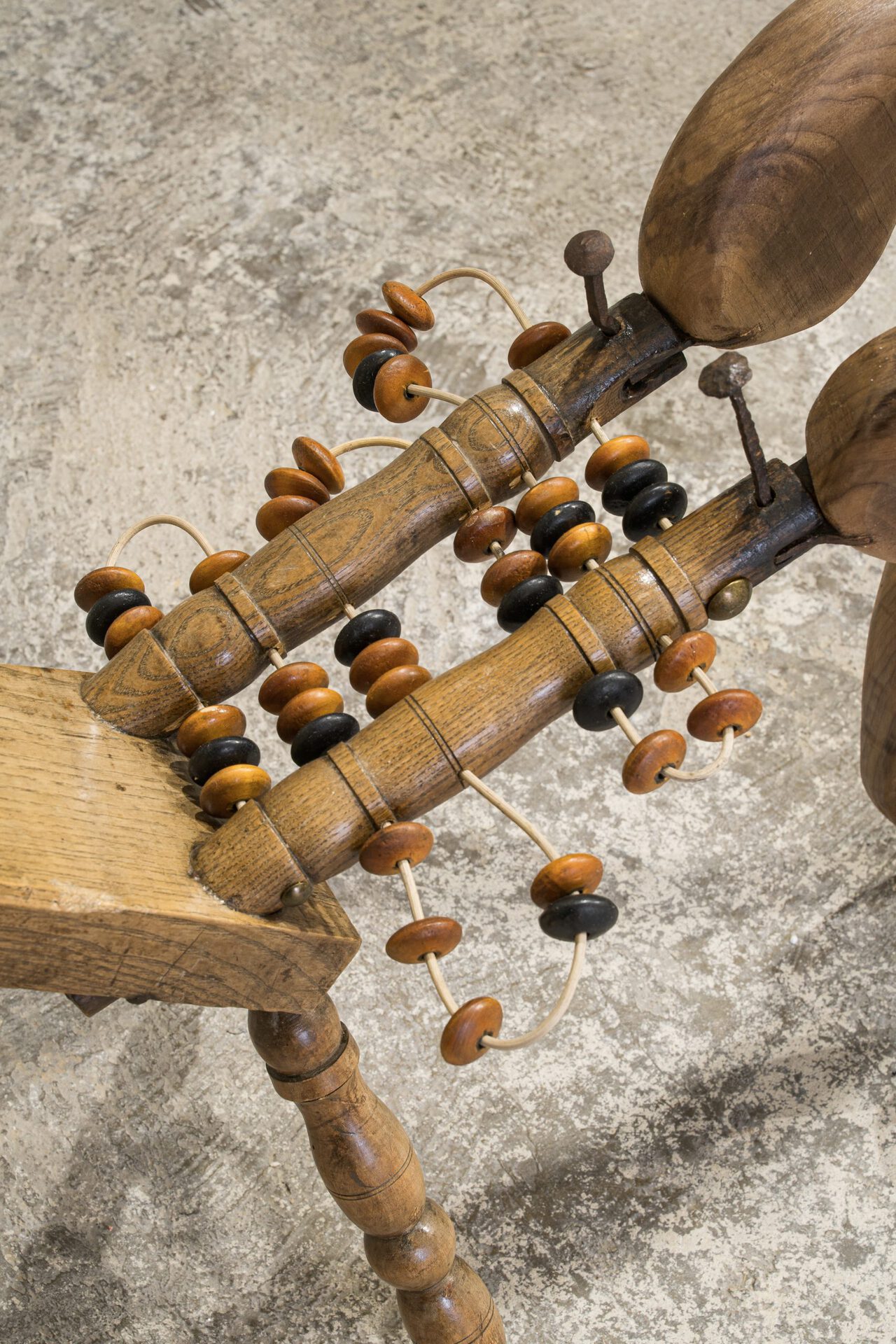
Location
Vilnius St. Virgin Maria ‘s Church buildingDate
29.09 –17.10.2021Curator
Tautvydas UrbelisPhotography
Andrej VasilenkoText
In Bucolic Gang, Mónica Mays borrows from the potentiality of the neobaroque, in which botanical depictions introduce warped perspectives and the blurring of clearly delineated borders, putting fixed identities into question towards the formulation of yet uncertain ones.
The sculptures presented in the exhibition are an assemblage of elements foraged from around Vilnius: botanical imprints on animal skins, discarded domestic objects, and distorted crosses and baroque engravings from local churches. Their forms play on anamorphosis, which is an optical device employed to visualise warped images that may only be viewed correctly from a specific angle or reflection. These “broken” devices are also presented in the baroque church and a former Soviet storage building—where the exhibition takes place—with a room full of phantom frescos cut in half by a solid concrete floor.
Mónica Mays (ES/US/NL) lives and works between Amsterdam and Madrid. Her practice revisits craft and cultural memory to investigate forms of cosmological belonging. Materials with winding, ambulatory histories of global circulation and redistribution intermingle with fabulations, vernacular stories and scavenged objects of the home, creating families of works where praxis, lore and material agencies meet. She draws on ornamentation in folk and domestic artefacts as forms of tacit and unintelligible speech which pass on the irregular and unspoken histories of their making. Notions of botanical decolonisation, prepatriarchal mythologies and the neobaroque are present in her sculptural and performative work through polyphonic compositions and magical realism.
Exhibition curator: Tautvydas Urbelis
Design: Nerijus Keblys ir Mantas Rimkus (TAKTIKA studio)
Exhibition architect: Artūras Čertovas
Exhibition coordinator: Gabrielė Marija Vasiliauskaitė
Special thanks: Violetta Pilecka, Paulius Lukaitis, Algirdas Ridikas, Vladimiras Šiškovas, Matas Duda, Alex Zamora, Ula Žiobakaitė and Tom K Kemp
Partners: The Embassy of Spain in Lithuania, Bilbao Arte Foundation and Vilnius city municipality.
Rupert’s activities are supported by Lithuanian Council for Culture.
EXHIBITION OPENING HOURS:
Monday-Friday 14.00-18.00
Tuesday closed
Saturday 12.00-18.00
Sunday 13.00-16.00
EXHIBITION GUIDED TOURS:
The 13th of October, 18:00 (By Þórhildur Tinna Sigurðardóttir) Tour Language: EN
The 16th of October, 14:00 (By Þórhildur Tinna Sigurðardóttir). Tour Language: EN
The 18th of October, 18:00 (By Tautvydas Urbelis). Tour Language: LT
Imagine finding yourself in a verdant flatland. Glimmering light caresses your skin as you look around and notice that this flatland is a peculiar one—it has no horizon or distinguishable shapes. It is endless and ethereal. You are feeling slightly dazed, your breathing deepens but with each breath, an increasing sense of belonging seeps into your body. Strangely enough, existing in a borderless and shapeless world feels soothing. As you look around, an unbodied voice whispers that this flatland is a liminal space between different worlds. One world just ended and another has not yet begun. The transition was seamless; one world gave way to another, as it happened countless times before. Just by mere chance, you happen to be in the midst of this shift.
You have been in the flatland for a while now. You are feeling how time passes through your body—a singular object in the whole space—and the ethereal flatland slowly starts to take shape. Matter shifts, and turns, and simmers. You recognise that this new space is deeply expressive. But at the same time, it cannot be attached to a specific location, time period or culture. Eloquent ornaments, vivid shapes and distinct curves capture your senses but cognition twitches when attempting to compartmentalise the reality you are witnessing. This reality is part of a new world. With the greatest of ease, you understand that you are also a part of it. Your own skin, which for so long was merely a porous barrier between you and the world, is now imprinted with different plant patterns and extends to different objects around you. You are blossoming only like an adolescent can blossom.
Any unease about the end of the world is gone. You are learning how to live in a reality where sharing skin is also a practice of nonverbal communication. Every world has different ways to communicate and this one seems to be willing to share and be shared. All around you, a visceral feeling oozes from the environment’s fissures and cracks. Your experience starts to resemble foraging: submerging yourself into an environment that is giving without the demand for reciprocity. But the reciprocation always inevitably happens through touches, nibbles and shared being-in-the-world.
The excitement in your body is growing and a conditional reflex tells you to take your smartphone, open the camera app and point it at one of the objects that surround you. You do this and an in-app artificial intelligence trained to recognise objects proclaims that one of these is ‘a dog’. But you clearly see that it is not a dog. It is something else but you cannot tell what it is. Just like the app, language stumbled when facing the unknown. Technic has lost its power to narrate the world.
You switch off your phone and look at the black screen. Without piercing light, the screen reflects the world that came into being. Anamorphic reflection unveils unseen images and crevices of reality that otherwise remain hidden. Ornaments, patterns and engravings spout and overflow the screen, eroding the line between reflection and reality.
This text was written by Tautvydas Urbelis thinking and sensing with Mónica Mays, Federico Campagna, Silvia Federici, smartphones, entelechy (Jane Bennett), Marija Gimbutas, Lithuanian mythology and geography, Édouard Glissant, artificial intelligence, Mark Fisher, a story told by Mónica at Chačiapuri eatery (Sodų str. 7, Vilnius), Isabelle Stengers, an Instagram story by Alice Bucknell (no longer accessible), Octavia Butler, Maria Lugones, slugs via Kayla Anderson, Rupert (both as a fleeting person and an institution) and many others who wished to remain unremembered. They all left different imprints within the text and the works.
Tautvydas Urbelis